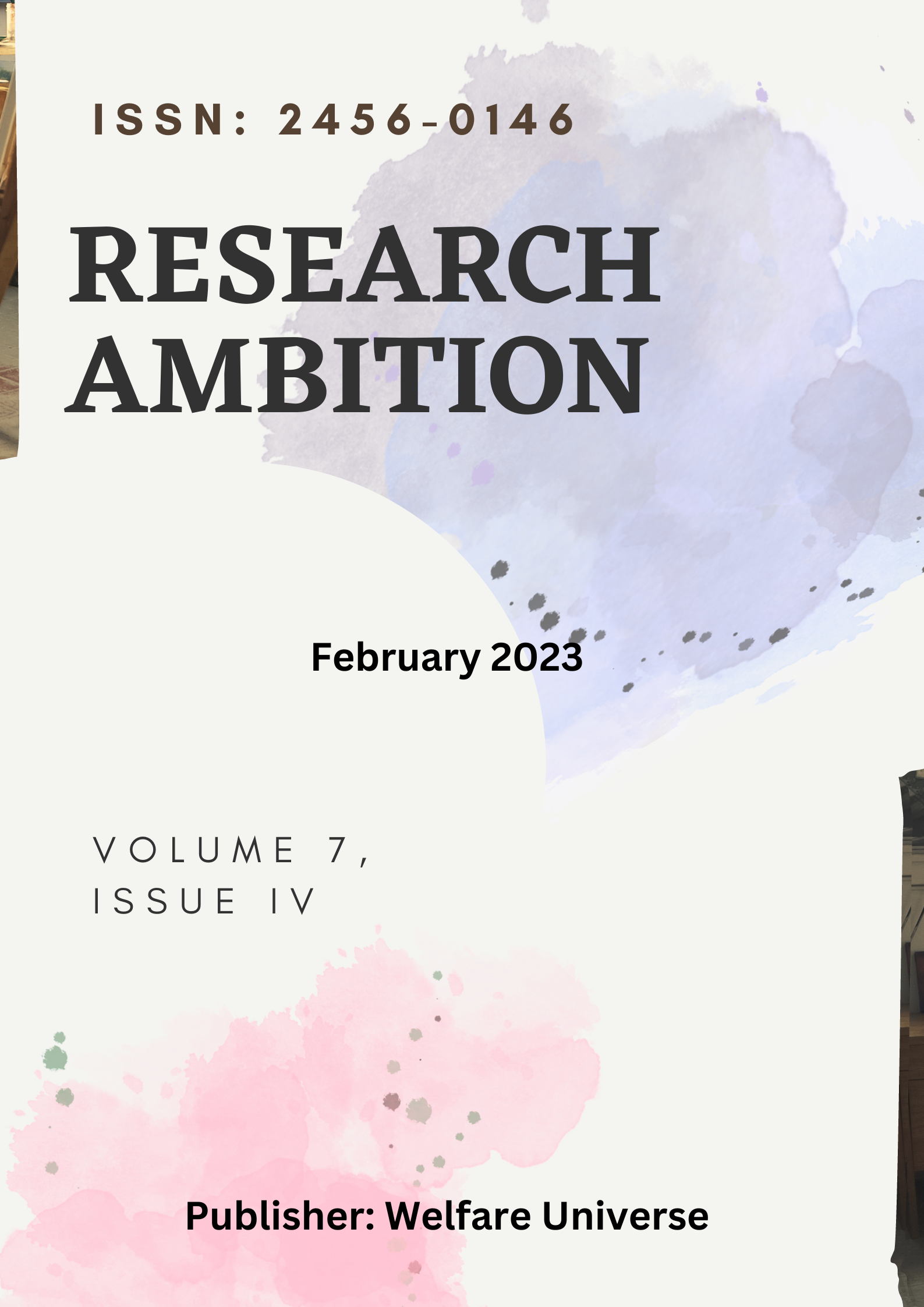Mahila Sashktikaran se Sambandhit Shaskiya Nitiyan Evam Karyakramon ka Alochnatamak Adhyayan (Madhyapradesh Prant ke Vishesh Sandarbh me)
A Critical Study of Government Policies and Programs Related to Women's Empowerment (With Special Reference to the State of Madhya Pradesh)
Keywords:
Female Infanticide Prevention Act, Hindu Widows' Remarriage Act, Abolition of Sati Act, women enjoyed equal rights and responsibilities, women's freedom, women's statusAbstract
Women are the foundation of society. In Indian society, women have always been given the highest status and have been accepted in various roles. A woman is an eternal force who has shouldered numerous social responsibilities since ancient times. Despite this, she has been placed in a lower social hierarchy for a long period in Indian society. However, this does not imply that the social status of women has always been secondary.
If we look at history, it is evident that during the pre-Vedic era, women enjoyed equal rights and responsibilities as men. They were fully aware and active in their roles for themselves and society. However, due to a lack of education, the religious and social status of women gradually declined.
During the Mughal era, more restrictions were imposed on women's freedom, significantly curtailing their independence. In many ways, women were considered the property of men. They were bound by so many social constraints that their independent identity was almost lost, and their lives became confined to the household.
In the 19th century, major social reformers focused their social and religious reform movements on improving the status of women. As a result, several significant laws were passed, such as the Abolition of Sati Act (1829), the Hindu Widows' Remarriage Act (1856), the Female Infanticide Prevention Act (1870), and the Special Marriage Act (1872). These reforms significantly improved the social and economic status of women. As a result, women became not only economically empowered but also an aware and active part of society, enabling them to stand alongside men in every aspect of life.
Despite various government efforts, although there has been an improvement in women's status, challenges still remain. The increasing incidents of violence against women highlight the gaps that still exist. Crimes such as dowry-related murders, female infanticide, and various other adversities continue to persist. These issues have contributed to a declining gender ratio, and even today, many women do not feel completely safe when alone.
References
Ahuja, A.: Political History of Indian Thought, Agrawal Publication, New Delhi, (1997).
Aryendu, Akhilesh: A Strong Nation Can Be Built Only Through Educated Girls, Kurukshetra, (2016) 03, 15-18.
Upadhyay, Lakshmi & Dubey, Rita (2000): Contribution of Educated Women in Social and National Development, Education and Society, First Edition, Madhya Pradesh, Bina: Aditya Publishers.
Ansari, Niyaz (2003): Women Empowerment: Status and Direction, Niti Marg, 4(24), 15-18.
Kag, Suresh (2015): Participation of Women Representatives in Panchayats: An Analysis, Shabd Brahm, Peer-reviewed Journal, 3(9), 18-20.
Kashyap, Subhash (2009): Indian Constitution, New Delhi, Agrawal Publication.
Kumar, Krishna: Childhood of Girls and Their Education, Shiksha Vimarsh, March-April 2015.
Gupta, Anchal & Gupta, Vishesh (2009): Sociological Study on the Role of Increasing Education Among Women Child Laborers, Pariprekshya, 16(1), 59-68.
Gupt, Maithilisharan (2013): Lokvani, Allahabad, Sharda Publication, 14-15.
Channa, Karuna (2013): Gender Inequality in Primary Education in India, Pariprekshya, 4(23), 46-60.
Chaurasia, Madhuri (2013): Contribution of Education Towards Women Empowerment (With Reference to Neemuch District), School Education, 34-36.
Chakraborty, Kiran Shankar (2008): Status and Empowerment of Women in Tripura, 15-17.
Jain, Anil Kumar & Singh, Rajni Ranjan (2014): Evaluation of the Role of Kasturba Gandhi Girls' Schools in the Educational Empowerment of Marginalized Girls, Pariprekshya, 21(2), 65-76.
Tiwari, Rajni & Tiwari, Radhikacharan (2000): Women’s Education and Society, Education and Society, 1(3), 7-13.
Desai, A.R. (1977): The Social Background of Indian Nationalism, Delhi.
Pandey, Ramsakal (2010): Women’s Education, Teachers in Emerging Indian Society, Agra, Agrawal Publication.
Devgan, Praveen & Baghel, Anju (2012): Study on the Adjustment and Educational Achievement of Minority Girl Students in the Context of Their Empowerment, Pariprekshya, 19(2), 119-134.
Priyanka (2015): Television and Women Empowerment, Shabd Brahm, Peer-reviewed Journal, 4(1), 2-5.
Bhatt, Dipesh Kumar (2016): Role of Educational Institutions in Rural Women Empowerment, Journal of Adult, Continuous, and Lifelong Education, Indian Adult Education Association Journal, 37(1), 5-9.
Muniyadi, M. & Singh, Neeru (2012): Empowerment of Tribal Women for Healthy Development: An Indian Perspective, Tribal Health Journal, 18(3), 43-58.
Yadav, Dayashankar Singh (2016): Women Empowerment Through Educational Policies and Programs in India, Yojana, (1), 49-52.
Ramachandran, Vimala (2016): Women and Girls’ Education: The Indian Scenario, Yojana, (1), 10-15.
Dubey, Shyamcharan (2001): Indian Society, National Book Trust India, New Delhi, 98-105.
Singh, J.P. (2013): Sociology: Concepts and Theories, New Delhi, Ashok K. Ghosh.
Singh, Garima (2008): Expansion of Girls' Education in the Eastern Region of Uttar Pradesh, Pariprekshya, Educational Planning and Administration in Socio-Economic Context, 3(15), 14-21.
Singh, Shailendra (2012): Women Empowerment Through Education, Shodh Sanchayan, 3(2), 1-7.
www.mpswc.nic.in/vad_suchi.html, 14-05-16,1.10PM.
http://www.census2011.co.in/census/state/madhya+pradesh.html, 14-05-16,11.28AM
http://www.mapsofworld.com/india/madhya-pradesh.htm, 13-05-16,21.20PM.
http://www.mpwcd.nic.in/documents/10192/9185784/prashaskiyaprativedan2013-2014.pdf, 11-05-16,10.15AM.
www.mpplanningcommission.gov.in/annual-plan.htm, 11-05-16,11.09AM
www.mponline.gov,11-05-16,10.29AM
www.mpinfo.org, 12-05-16,10.15AM
www.mp.gov.in, 11-05-16,02.45PM
Downloads
Published
How to Cite
Issue
Section
License

This work is licensed under a Creative Commons Attribution-NonCommercial 4.0 International License.











